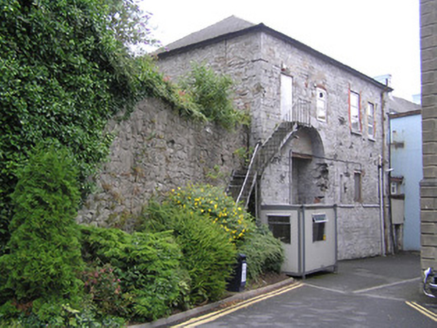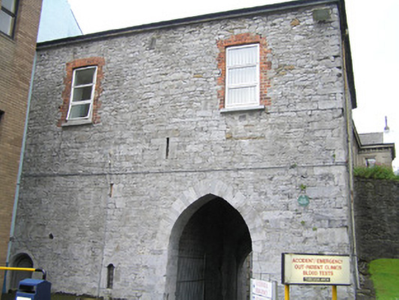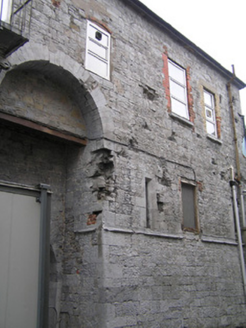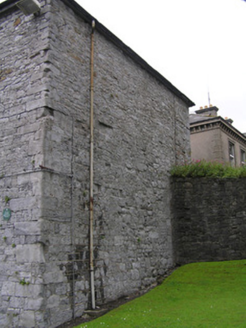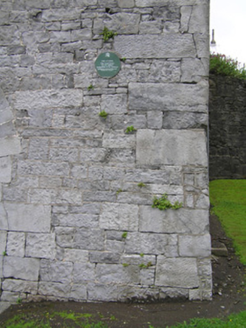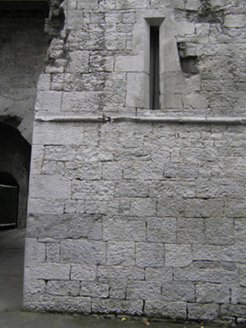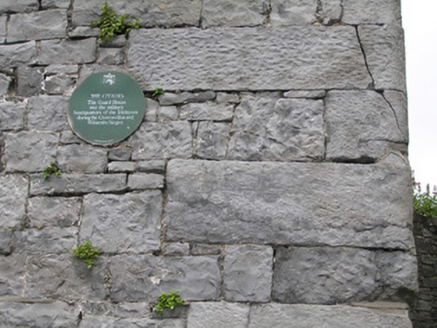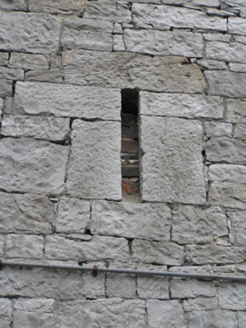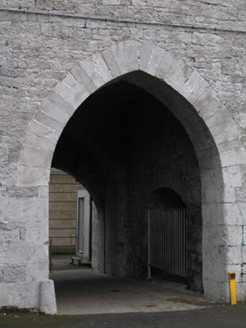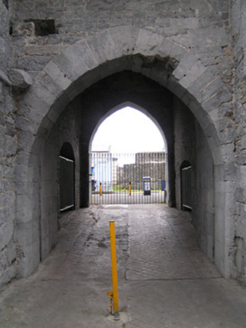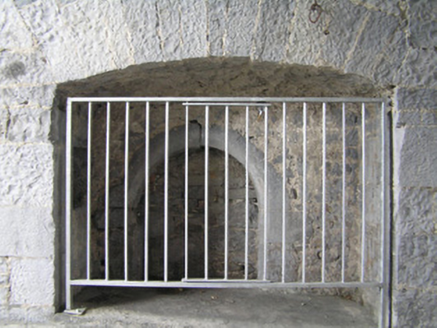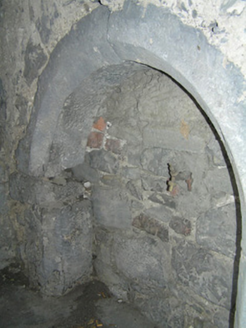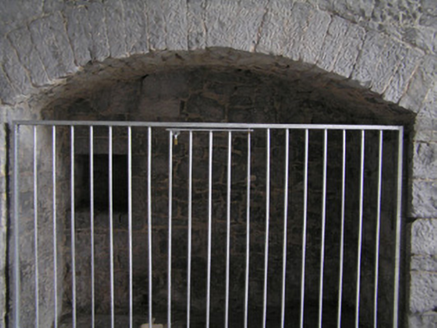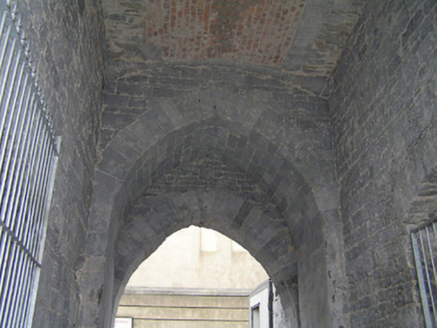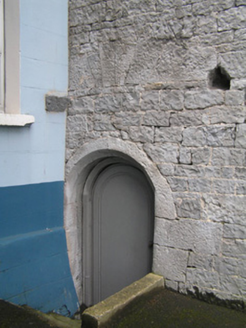Survey Data
Reg No
21513067
Rating
Regional
Categories of Special Interest
Archaeological, Architectural, Artistic, Historical, Social
Original Use
Town/city walls
Historical Use
Barracks
In Use As
Hospital/infirmary
Date
1590 - 1650
Coordinates
158283, 157022
Date Recorded
17/07/2005
Date Updated
--/--/--
Description
Attached square-plan two-bay two-storey over basement heavily fortified medieval limestone guard house, built c. 1625, with a battered base, and a large pointed arch opening giving access to a passage running through the building. Hipped artificial slate roof with uPVC rainwater goods. Random rubble limestone walls to the upper half and squared and coursed rubble limestone lower section. Large tooled in and out limestone quoins to the visible corners with rounded corners. Two gauged brick camber-arched window openings to first floor level dating to the nineteenth century, with red brick reveals, limestone sills, and uPVC windows. Two loop hole openings to north elevation and two more elaborately carved loop hole windows to south elevation with a bull nose moulded stringcourse beneath. To the north elevation is a pointed-arched carriage arch giving access to a partial brick barrel vault. A cement covered passage descends through the building to meet a further similar arch with a lower pointed arch attached, set within a double-height round-arched recess to south elevation. Within the passage to either side is a segmental-headeded arch with limestone voussoirs. An additional carved limestone arch is half sunken. To north elevation near ground floor level is a further round-arched window opening with carved lintel. Carved limestone door opening to the corner with a limestone relieving arch and modern timber door access by concrete steps.
Appraisal
This substantial and relatively intact late medieval fortification which as been added to and adapted over the centuries. It was the main fortification in Irishtown. It does not appear on a 1590 map of Limerick which means it most likely belongs to the late sixteenth century. Many important features remain including rounded pointed-arched openings and loop holes.
